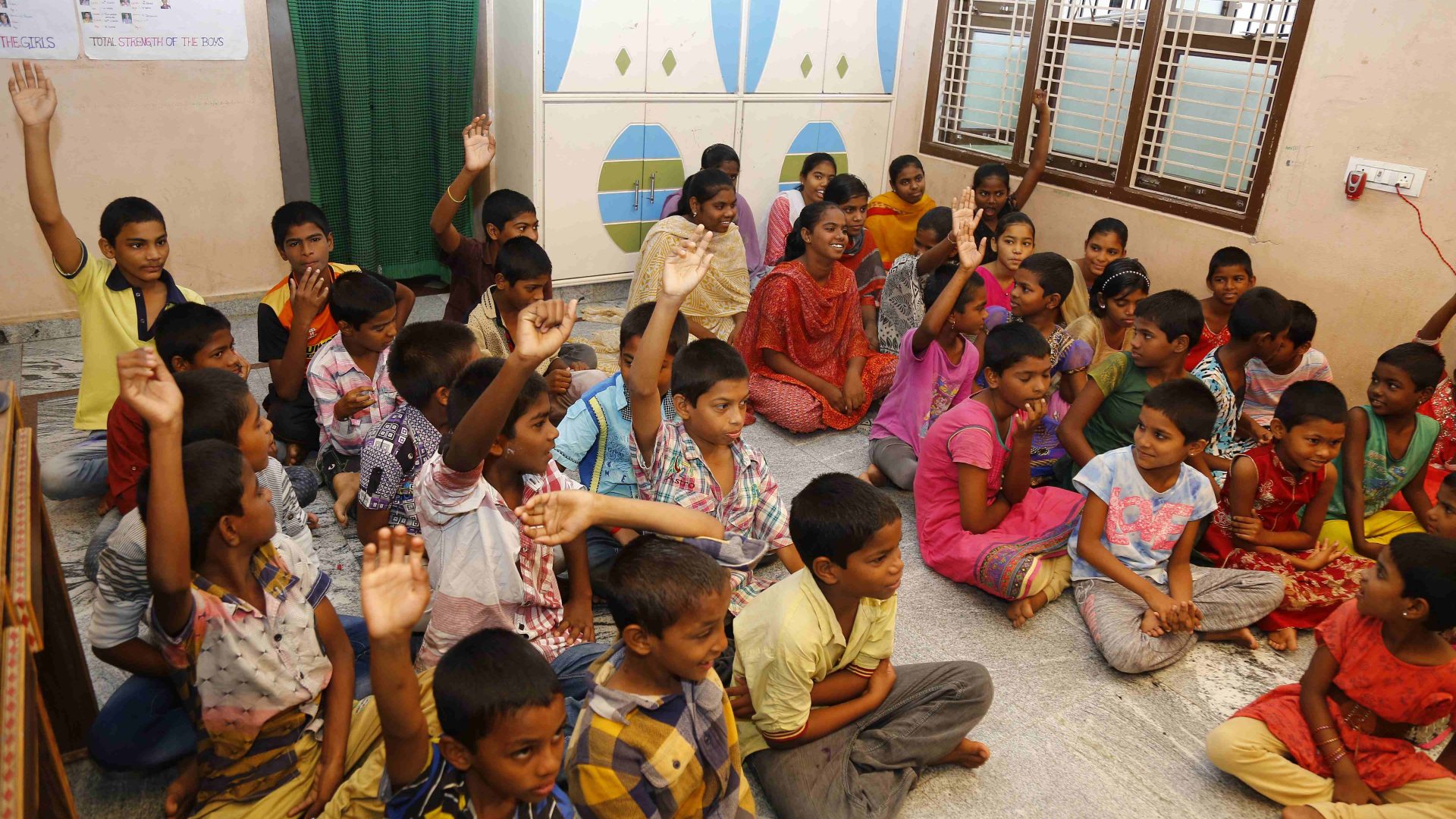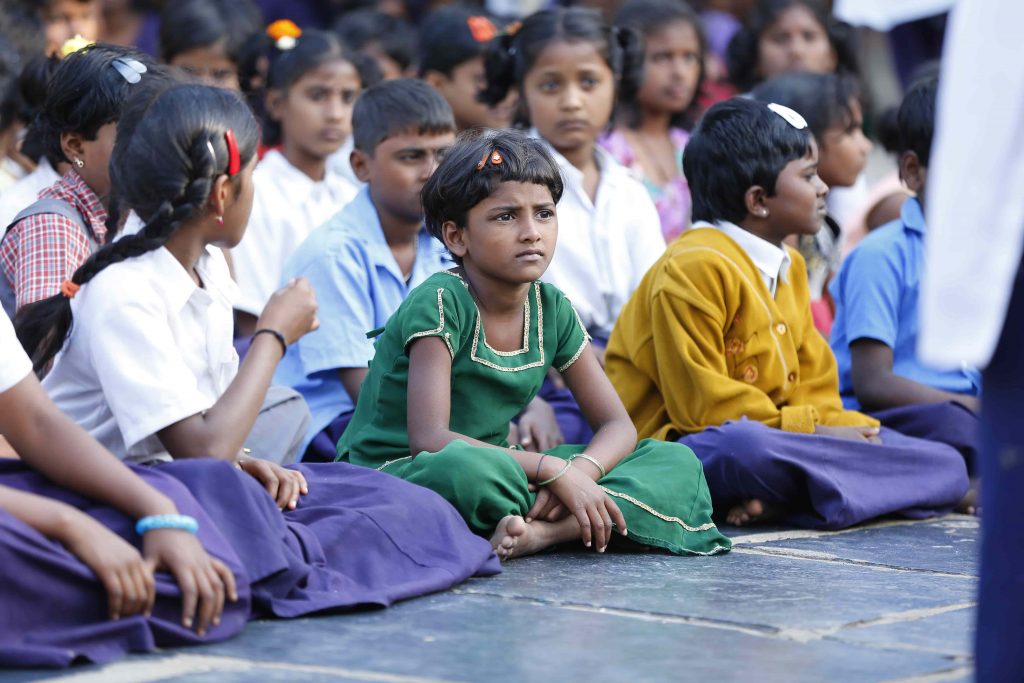
NGOS for Children work with passion so that every child gets what she truly deserves, a solid start in life, quality education and protection from harm. NGO Children’s campaigns have reduced infant mortality, chronic malnutrition and child trafficking, and increased access to primary and secondary education.
Donate online to join the movement to give every Indian child a future
How NGOs are Saving Street Children
Support NGO working for Street Children. Donate Now
Donate to SERUDS Charity Causes
FOREIGN DONORS – PAYPAL / Credit or Debit Cards Click Here
Who are Street Children
“Street children” are those children who work in the streets and markets selling or begging, and yet stay with their families, and homeless children who have run away or do not have contact with their families. Children run away sometimes due to violence, abuse, or extreme poverty at home.
According to 1991 India Census, their number was 18 million, though only 5–20 percent of them are truly homeless and do not have families. Today the number of street children could well be 36 million, given the growth in joblessness, urban migration, and the COVID pandemic.
Most of the street children do rag picking, vending, taking care of animals, assisting in shops, hotels, restaurants and domestic labor to survive. As a consequence they lack formal education of any kind. Due to the low and uncertain income, they suffer from poor health and malnourishment. Combined with the unhygienic conditions they live in, poor health and lack of access to medical care, they are subject to critical illnesses, which results in higher mortality rate.
Problems of Street Children
Street children are most vulnerable to exploitation and abuse. They are forced to work for long hours, without food, without safety equipment, and for very low wages. The children are not aware of their rights or are unable to enforce them.
Impact on Street Children
- Loss of the innocence, and fun of childhood
- Sexual/ physical abuse
- They are sometimes forced into anti national activities
- Malnutrition and unhygienic appearance
- Drug and substance abuse and addiction; easy access to solvents helps them in handling hunger but makes them addicts
- Loss of values and morals
- Loss of hope for a better future, personal development
- They are extremely vulnerable to sexually transmitted diseases including HIV/AIDS.
- Exploited by criminals for trafficking of drugs, sex and other illegal activities

How are India’s NGOs Helping Street Children
Eliminating Child Labour
NGOs educate trade organisation to reach out to business owners and educate them about the evils of child labour. Some NGOs raid workplaces like farms and factories where child labour is practiced, and free these children, to send them to school and rehabilitate them
Education and Enrollment
Bringing out-of-school children back to the classroom
Bringing street children and child labourers back to school
Providing Safe Shelter
NGOs like Seruds run Children’s Shelter where rescued children are provided a safe home, given medical care and education
NGOs working for Street Children
Global March Against Child Labour:
The Global March Against Child Labour (Global March) is a worldwide network of trade unions, teachers’ associations and civil society organisations that work together towards the shared development goals of eliminating and preventing all forms of child labour, slavery and trafficking and ensuring access by all children to free, meaningful and good quality public education. This march began on January 17, 1998 under the leadership of Kailash Satyarthi, the Nobel Peace Laureate. The marchers united and advanced through Africa, Asia, Europe, Latin America and the U.S. Their final destination was Geneva, Switzerland where the International Labour Organization (ILO) meeting was taking place. The voice of the marchers which included children and youth was heard and reflected in the draft of the ILO Convention 182 on the Worst Forms of Child Labour. The following year, the Convention was unanimously adopted at the ILO Conference in Geneva.
Bonded Labour Liberation Front (BMM) Bandhua Mukti Morcha:
The vision and mission is to identify adult bonded labour, child bonded labour/child labour, with a view to rehabilitate the illegal labor. They lobby with the governments and the United Nations for betterment of the bonded labor. Very often, one needs to undertake legal casework on behalf of children, in order to free them. BMM assists children working and living on the street in multiple ways, and helps individual cases of violation
Child Labour Action Network (CLAN):
The Child Labour Action Network’s aim is to contribute to the creation of a society in which all children have equal opportunities for development and that they grow as responsible citizens with a view of coexistence, sustainable development and social justice leading to peace for all. With this in mind, CLAN lobbies governments and the United Nations, provides training or education on child rights, researches child rights, work in partnership with organisations, work with media and press with a view to mitigate child labour and rehabilitation of children in armed conflict, children in conflict with the law, children working and living on the street; reporting sexual exploitation of children to the CRC.
Foundation for Legal Aid, Environment & Social Action (FLESA):
FLESA is a non-profit organisation comprised of legal experts, students, and human right activists. The organization works mainly for the cause of protection of rights of women, children, prisoners, and persons with disabilities. With this in mind , FLESA helps through its legal aid and advice programmes; lobbies governments and the United Nations, provides training or education on child rights.
Very often, one needs to undertake legal casework on behalf of children, in order to free them.
Grace Action India (GRACE):
Grace runs programmes on education, including the street children and working children, disabled children, preparatory school for slum and street children .
Plan International – India:
Plan began its work in India in 1979, and it is one of the largest international NGOs working in the country. Plan India reaches out to vulnerable children in remote areas and facilitates development processes that result in increased security for children.
SERUDS :
SERUDS is a grass root level Non Government Organization (NGO), working as a Charitable Organization in Kurnool. It was founded in 2003 by a team led by Malllikarjuna Gorla, s software engineer. Today it works for street children and orphans through JoyHome Orphanage and 3 creches or daycare centers for children, who would otherwise have to fend for themselves and left hungry, of daily workers. These kids are given good food, medical care and education.
Salaam Baalak Trust:
Salaam Baalak Trust provides support for street and working children in inner cities, providing education, basic literacy and schooling. The main aim is to rehabilitate the street child either by returning them home or finding an alternative means of income off the streets
CRY:
Child Rights & You: CRY’s role is that of an enabler, a catalyst between two groups of people-development organisations and individuals working at grassroots-level with marginalised children, their families and communities.
For the past 29 years, CRY has been supporting grassroots-level NGOs that work with children and communities to ensure that all Indian children get the following four basic rights guaranteed to them by the United Nations Charter of Child Rights, 1992 :
- Right to Survival – to life, health, nutrition, name, nationality
- Right to Protection – from exploitation, abuse, and neglect
- Right to Development – to education, care, leisure and recreation
Right to Participation
The four core principles of the Convention are:
Non-discrimination. devotion to the best interests of the child, the right to life, survival and development.


